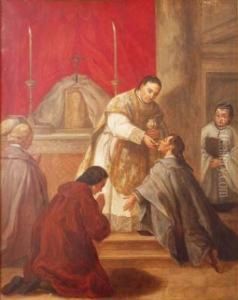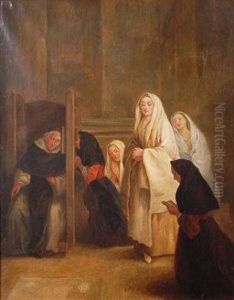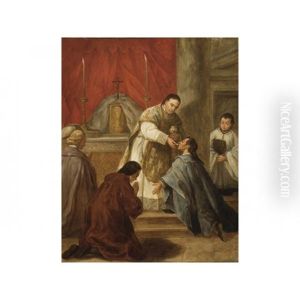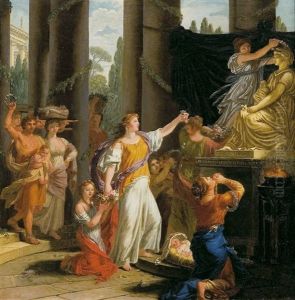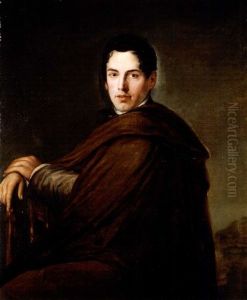Juan Antonio Ribera Y Fernandez Paintings
Juan Antonio Ribera y Fernández was a Spanish painter and a representative of the Neoclassical style, which was prevalent in European art during the late 18th and early 19th centuries. He was born on September 7, 1779, in Madrid, Spain, and was an active artist primarily during the first half of the 19th century.
Ribera's training in the arts began under the tutelage of his father, who was also a painter. Later, he furthered his studies at the Real Academia de Bellas Artes de San Fernando (Royal Academy of Fine Arts of San Fernando) in Madrid, which was the leading art institution in Spain at the time. There, he was influenced by and worked with some of the most prominent artists and thinkers of his era, which shaped his artistic style and philosophy.
During his career, Ribera achieved considerable acclaim. He was particularly known for his historical and mythological works, which often contained strong moral and allegorical messages, a hallmark of Neoclassicism. His paintings were characterized by their clear, linear style, attention to detail, and careful composition, reflecting the ideals of harmony, proportion, and beauty that were celebrated by Neoclassical artists.
Ribera's works were commissioned by various notable patrons, including the Spanish monarchy and the church. He also received numerous honors and was appointed as a court painter. His paintings can be found in several important museums and collections in Spain and across Europe.
Juan Antonio Ribera y Fernández's contribution to Spanish art continued to influence generations of artists. He passed away on April 13, 1860, in Madrid, leaving behind a legacy of work that continues to be studied and admired for its representation of Neoclassical ideals and its role in the cultural heritage of Spain.
